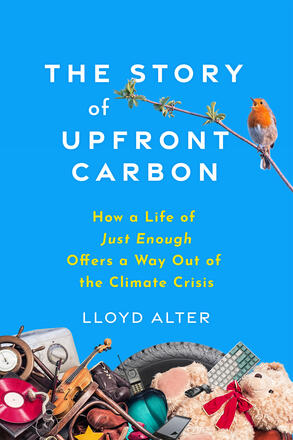
The Story of Upfront Carbon
How a Life of Just Enough Offers a Way Out of the Climate Crisis
When you look at the world through the lens of upfront carbon, everything changes
Description
When you look at the world through the lens of upfront carbon, everything changes
Think that buying an electric car or switching to a heat pump is going to save the planet? Think again.
"Upfront carbon" refers to all emissions involved in making your car, your home, or any other item. These invisible embodied carbon emissions matter a lot. As we weed out fossils fuels and incorporate more renewables into our energy supply, upfront carbon becomes increasingly dominant compared to operating emissions, yet it is often ignored.
By focusing on consumption rather than production, The Story of Upfront Carbon covers:
- Why we are fixated on energy efficiency, not carbon, and why this needs to change
- Why carbon calculations are so fiendishly difficult
- How the simple idea of sufficiency for individuals and whole economies is a powerful strategy to avert looming climate catastrophe
- The astonishing upfront carbon of everyday objects from coffee cups to heat pumps, and why electric bikes, not electric cars, are the answer
- How big-picture thinking and a systemic approach to production can help guide the transition to degrowth and an equitable, zero-carbon society.
Leavened with wit and packed with concrete strategies for minimizing the ecological footprint of transportation, agriculture, consumer goods, the built environment, and more, this highly readable and accessible guide is required reading for a world on the brink.
Reviews
Lloyd Alter is the most thoughtful, creative, funny, lucid, provocative person writing today about design. Probably nobody will agree with everything in this book. But every reader will learn much that is fresh and important.
— Denis Hayes, developer of the Bullitt Center, and national coordinator, Earth DayLloyd Alter's The Story of Upfront Carbon is the book the world needs: fascinating, clear, and positive. Read this, get everyone you know to read it, and save the planet — as Alter shows, it's much easier to achieve than you may think.
— Dr. Barnabas Calder, Head of the History of Architecture Research Cluster, University of Liverpool School of ArchitectureIn this important new book, architect Lloyd Alter, one of our most astute environmental analysts and writers, explains why we also must change our society from one driven by rampant overconsumption into one that adopts common-sense simplicity in our business practices and lifestyles.
— F. Kaid Benfield, co-founder, LEED for Neighborhood Development, and author, People Habitat: 25 Ways to Think About Greener, Healthier CitiesLloyd Alter explains why we need to ask: Do I really need this product? Will something much smaller serve my needs? and finally, How can this be built without adding carbon to the atmosphere? The Story of Upfront Carbon is enlightening and it is essential.
— Bart Hawkins Kreps, co-editor, Energy Transition and Economic Sufficiency